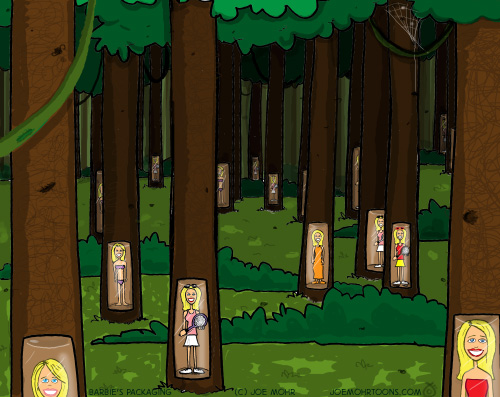It may seem difficult to believe that in this age of globalization and inter-connectivity there are still small groups and tribes existing without any current or previous contact with the modern, outside world. Frequently, reports of such isolated tribes are dismissed as myths or hoaxes.
But on June 22, the Brazilian Bureau of Indian Affairs announced confirmation of a group of uncontacted people living in the western part of the Amazon’s Javari Valley, which is near the border of Peru. The existence of the group of about 200 or so people were confirmed following an over-flight expedition of the region; a series of aerial photographs clearly showed several rounded-top huts in small clearings dotting the forested land. Analysis of the photos also showed that the tribe is growing a variety of crops, including corn, bananas, and peanuts.
‘Uncontacted’ does not necessarily mean ‘lost’ or ‘unknown’. Reports of a small tribe of indigenous forest dwellers in this remote part of the Amazon Rain Forest had been circulating for awhile, but official confirmation did not come until this past week
The Javari Valley is believed to be home to the largest concentration of uncontacted people in the world; an estimated 2000 uncontacted people — comprised of several small tribes — currently live in the area. Unfortunately, the area is quite close to the border of Peru where logging and oil exploration operations have intensified in recent years.
“Among the main threats to the well-being of these groups are illegal fishing, hunting, logging, mining, cattle ranching, missionary actions … and drug trafficking,” Fabricio Amorim of Brazil’s Indian Affairs Department (FUNAI)

The Feb. 2010 broadcast of the first-ever aerial footage — filmed by BBC 1 for its ‘Human Planet’ documentary series — of another, nearby, uncontacted tribe created a sensation, and the revelation that Peruvian logging operations were threatening their existence caused an international outcry and demand for their protection. A petition campaign and international pressure eventually persuaded Peru’s President Garcia to order a halt to the operations in that area and to seek greater protections for these tribes.
International awareness and interest in such small tribes of uncontacted people — believed to number about 100 worldwide — has grown tremendously in recent years. From a humanistic standpoint, the interest is long-overdue, as global “resource development” companies and operations extend their reaches into more and more remote areas of the world.
Watch the video of the first aerial footage shot of an uncontacted tribe (article continues below):
The government of Brazil has adopted a strong protectionist stance towards such isolated groups whenever they are “discovered” or confirmed. Protection of these groups is the responsibility of Brazil’s Bureau of Indian Affairs (FUNAI) and generally means protecting their lands from commercial exploitation.
Such measures will hopefully also minimize outsider contact with the tribe (especially in an uncontrolled manner) as disease contagion is perhaps the greatest threat to their long-term survival. History is full of tragic, ‘first contacts’ between remote/isolated groups and (often) Western explorers.
The “missionary actions” mentioned in the block quote above euphemistically refers to the historical reality of various religious groups sending missionaries into the jungles, and in so doing, introducing a slew of pathogens to which the uncontacted people have not developed immune resistance.
For example, in 1987, a group of missionaries made contact with members of the Amazonian Zo’e tribe resulting in the deaths of 45 tribe members from several common diseases for which most in the developed world had acquired immunity. But it’s not just “well intentioned” missionary efforts that can cause harm in this manner; in Peru, nearly half of the uncontacted Nahua tribe died of disease following the start of oil exploration operations on their lands, also in the 1980’s.
And here’s another rare video of a true ‘first contact’ with members of the Korubo tribe (another Brazilian amazon tribe) in 1996:
To learn more about these and other uncontacted peoples, and what you can do to help protect them, visit Survival International and/or its affiliated site www.uncontactedtribes.org
Top photos: Peetsa/Arquivo CGIIRC-Funai via Survival International website
Third photo from the top: BBC / FUNAI / Survival
Video: BBC 1 via Survival International website
Map/Video (bottom of page): Survival International



